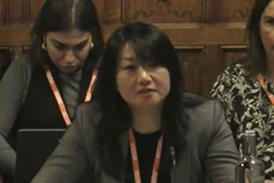A recent headline in the Daily Mirror read: ‘Divorce at lowest rate in over 50 years as cost of living crisis makes it too expensive.’ This did not seem quite right to me. Hadn’t a number of higher-profile family law teams received publicity for slashing the cost of divorce offerings following the implementation of the so-called ‘no-fault’ process in April 2022 under the Divorce, Dissolution and Separation Act 2020? Moreover, in 2018 hadn’t effective introduction of the paperless divorce with the gov.uk ‘Get a Divorce’ website led to many more do-it-yourself proceedings? It was time to take a closer look at this story.

The Office for National Statistics released its data – Divorces in England and Wales: 2022 – on 22 February. There were 80,057 divorces granted in England and Wales in 2022, a 29.5% decrease on 2021 (113,505) and the lowest number of divorces since 1971. That was the year the Divorce Reform Act 1969 came into effect, consolidated in the Matrimonial Causes Act 1973. So, numbers of divorces had fallen by almost a third. Surely there had to be a reason – or most likely, reasons – behind this sudden dip.
Interestingly, media reports agreed on the reasons. According to their experts, quoted everywhere from the Shropshire Star to the nationals, this was due to the cost of living crisis. Quite how this expert view was reached is open to question. Certainly, I am not aware of any evidence for this.
However, in contrast to the newspapers, the ONS did not jump to conclusions. Rather, it said that the number of divorces and dissolutions granted during 2022 may have been affected by the introduction of the 2020 act. This act, it stated, introduced new mandatory waiting periods at important stages, and other changes including allowing couples to end a partnership jointly, and the removal of grounds for divorce (also known as ‘facts’).
Memories can be very short, so I reminded myself about ONS announcements from previous years. In 2021, there were 113,505 divorces granted in England and Wales, a 9.6% increase on 2020 when there were 103,592. Therefore, the 113,505 figure could well have been an outlier.
It is crucial to note the title of the dataset. It says Divorces in England and Wales, not petitions. In other words, the figures extend not to the number of applications for divorce, previously termed ‘petitions’, but to the number of concluded sets of proceedings. Why should this matter? It matters because the new-style divorce brings with it a 20-week cooling off period between the issue of the divorce application and when one can apply for a conditional order of divorce, the equivalent of the old decree nisi. On top of that, there is the standard minimum six-week waiting period before one can make the conditional order final, although many couples delay finalisation until a financial settlement is reached. Under the new regime, divorce is taking at least five months longer. Accordingly, fewer of the no-fault divorces will have concluded in comparison to the older format.
It is submitted that the underlying trend of falling marriage rates will have a significant bearing on the number of divorces. There were 85,770 marriages in England and Wales in 2020, a 61% decrease from 219,850 in 2019; the lowest number of marriages on record since 1838. In the 30 years previously, 1989 to 2019, the number of marriages decreased by 36.6%.
With headlines like these, I was asked by one journalist if, as a family lawyer, I was in the office simply twiddling my thumbs. The short answer was ‘no’. We have plenty of work, thank you. The level of cohabitation is on the rise, meaning that cohabitee disputes are up. It would be interesting to get the figures for Trust of Land and Appointment of Trustees Act 1996 applications of former cohabitees. The proportion of people who live in a couple that are cohabiting (not in a marriage or civil partnership) has increased from 20.6% in 2011 to 24.3% in 2021. While married or civil partnership remained the most common legal partnership status among the population, this proportion has fallen to below 50% for the first time, from 51.2% in 2012 to 49.7% in 2021 and 49.4% in 2022.
In conclusion, we have been presented with a good media divorce story but it is worth looking behind the headlines for the truth.
Tony Roe is a family law partner, mediator and arbitrator at Dexter Montague LLP, Reading





























1 Reader's comment